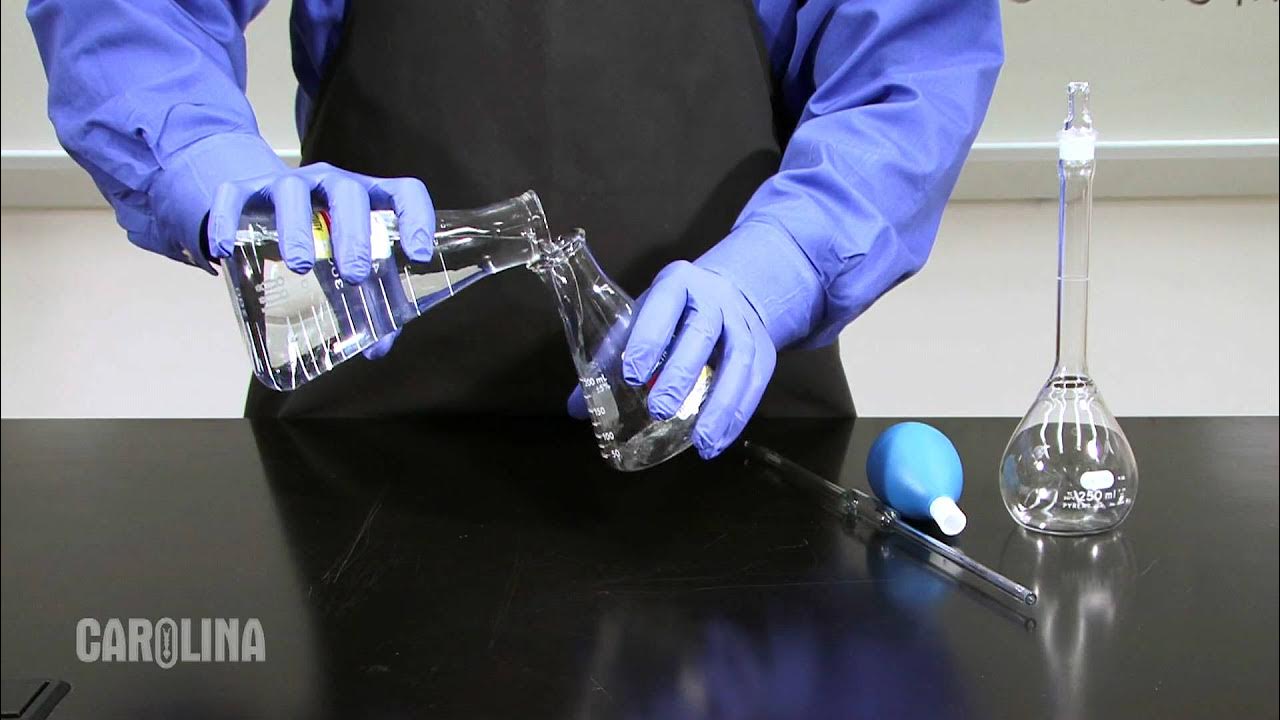Setting up and Performing a Titration
Summary
TLDRThis video, presented by Jared Hyman, an assistant professor of chemistry, provides a detailed guide on the proper technique for performing a titration. It covers essential equipment, such as burettes, pipettes, and Erlenmeyer flasks, and highlights the step-by-step process to accurately determine the concentration of an unknown solution by using a titrant. Key tips include preparing the burette, ensuring precise volume readings, and correctly identifying the endpoint using indicators. The video also emphasizes practicing titrations and using triplicate measurements for accurate results.
Takeaways
- 🧪 The purpose of titration is to determine the concentration of an unknown solution (analyte) by adding a chemical with a known concentration (titrant).
- 🔬 Titration requires key equipment such as a burette, ring stand, burette clamp, Erlenmeyer flask, volumetric pipette, pipette bulb, wash bottle, and an indicator.
- 🧯 A burette is used to add titrant to the analyte and has a stopcock to regulate the flow of liquid.
- 🔍 It is important to read the burette volume from the bottom of the meniscus at eye level for accuracy.
- 📊 Record the volume to the nearest hundredth of a milliliter for precise measurement.
- 🌡️ The first titration is often an estimate to get a rough idea of the titrant volume needed.
- ⚠️ When nearing the endpoint, titrant should be added slowly to avoid passing the endpoint.
- 🔄 The desired endpoint is indicated by a faint, pale color in the analyte, not a deep or dark color.
- 📋 Titrations are usually performed in triplicate, and the average volume of titrant is used for calculations.
- 🧫 The second video in the series will explain how to determine the concentration of an unknown acid using a known base.
Q & A
What is the purpose of titration?
-The purpose of titration is to quantitatively determine the concentration of an unknown solution, commonly called the analyte, by adding a known volume of a chemical with a known concentration (the titrant) until the endpoint is reached.
What equipment is included in Carolina's complete burette assembly kit?
-Carolina's complete burette assembly kit includes a burette, a ring stand, and a burette clamp.
Why is a burette used in titration, and how is it designed?
-A burette is used to add titrant in a controlled manner during titration. It is a long, narrow, graduated tube with a stopcock to regulate the flow of liquid. The markings on the burette are reversed, with the lowest numbers at the top and the highest at the bottom.
Why is an Erlenmeyer flask recommended for titrations?
-An Erlenmeyer flask is recommended for titrations because its shape allows for more vigorous swirling than other glassware like beakers, which helps mix the solution thoroughly while minimizing spill hazards.
What is the role of the indicator in a titration?
-The indicator is added to the analyte to signal the endpoint of the titration. It changes color when the chemical reaction between the titrant and analyte is complete.
What precautions should be taken when preparing the burette for titration?
-Before titration, the burette should be rinsed with deionized water and then with a small amount of titrant. It's important to check for air bubbles, ensure the liquid doesn't stick to the walls, and mount the burette vertically for accurate measurements.
Why is it unnecessary to fill the burette exactly to the zero mark?
-It is unnecessary to fill the burette exactly to the zero mark as long as there is sufficient titrant to complete the titration. The starting volume is recorded, and the titration is based on the volume dispensed rather than the initial level.
How should the volume be read from the burette?
-The volume should be read from the bottom of the meniscus at eye level. It is important to record the volume to the nearest hundredth of a milliliter, estimating one decimal place beyond the smallest graduation.
Why is the first titration considered an estimate?
-The first titration is considered an estimate because it helps to determine the approximate volume of titrant needed. This allows for more precise adjustments in subsequent titrations to avoid surpassing the endpoint.
What is the desired appearance of the analyte at the endpoint of titration?
-At the endpoint of titration, the analyte should appear as a pale, faintly colored solution. A darker color indicates an excess of titrant has been added.
Outlines

Dieser Bereich ist nur für Premium-Benutzer verfügbar. Bitte führen Sie ein Upgrade durch, um auf diesen Abschnitt zuzugreifen.
Upgrade durchführenMindmap

Dieser Bereich ist nur für Premium-Benutzer verfügbar. Bitte führen Sie ein Upgrade durch, um auf diesen Abschnitt zuzugreifen.
Upgrade durchführenKeywords

Dieser Bereich ist nur für Premium-Benutzer verfügbar. Bitte führen Sie ein Upgrade durch, um auf diesen Abschnitt zuzugreifen.
Upgrade durchführenHighlights

Dieser Bereich ist nur für Premium-Benutzer verfügbar. Bitte führen Sie ein Upgrade durch, um auf diesen Abschnitt zuzugreifen.
Upgrade durchführenTranscripts

Dieser Bereich ist nur für Premium-Benutzer verfügbar. Bitte führen Sie ein Upgrade durch, um auf diesen Abschnitt zuzugreifen.
Upgrade durchführenWeitere ähnliche Videos ansehen

EDTA method for calculation of hardness of water | EDTA Standardization

Kimia Kelas 11 Semester 2 : Titrasi Asam Basa

How to Dilute a Solution

A Level Chemistry Revision "How to Carry Out a Titration"

Titrasi Oksidimetri : Permanganometri dan Bikromatometri ( Kelompok 2 )

Proper use of a buret for a titration procedure
5.0 / 5 (0 votes)
